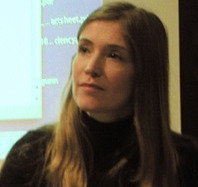An Israeli researcher has discovered that frightening memories can be “updated” with non-fearful information that wipes away the fear.

Eternal Sunshine of the Spotless Mind is a romantic fantasy film in which two star-crossed lovers erase painful memories about their relationship. They opt to wipe the slate clean, but during the “cleaning” process confusing, positive memories resurface. How true is this to life? Can painful recollections be stripped from our memories forever?
According to Israeli researcher Dr. Daniela Schiller, a neuroscientist and post doctoral fellow at New York University (NYU), the Spotless Mind film was born out of a resurgence of memory research in 2000 that focused on the reconsolidation of memory – work that was begun in the ’60s. Schiller’s new research, based on real people and published in the prestigious journal Nature, shows that painful memories can indeed be rewritten.
Schiller and her team at NYU found that when reactivating fear memories in humans there is a window of opportunity for these memories to be updated with non-fearful information. As a result, fear responses no longer accompany the memories.
The non-invasive process they report is somewhat different from the movie version: “The movie was inspired by the real research,” says Schiller who uses the film’s premise as the introduction to her work when she makes scientific presentations.
Changing – not erasing – the emotional response
Back in 2000, Schiller tells ISRAEL21c, a study in Nature reported on targeting a phase of memory called reconsolidation. This memory phase is activated every time you remember something. It is the very act of remembering that triggers the phase.
What Schiller and her team of researchers now report in a new Nature study is that fearful memories can be rewritten. But unlike in the movie, they are not replaced forever: “The movie says you can take an old memory and you can erase it,” explains Schiller. “The difference between the movie and what we are doing is that we don’t erase the content of [painful] memories, we just change the emotional response.”
Combining previous results from animal studies conducted by her colleagues, as well as experiments on real people (university co-eds), the team developed a non-invasive method for rewriting memories. While the results were clear-cut, Schiller says it will be some time before the research can be moved out of the lab and applied to treating victims of Post Traumatic Stress Disorder (PTSD) or people with severely “broken hearts”.
In the study, the scientists created a painful fear memory by showing volunteers an object and pairing it with an electric shock – a method called classical conditioning. A day later, some of the participants were reminded of this object, a process intended to reactivate the memory, and an attempt was made to replace the fearful memory with a safe one. On day three, they were tested again for a fear response.
Treatment “outside the lab” still a long way off
“Our research suggests that during the lifetime of a memory there are windows of opportunity where it becomes susceptible to being permanently changed,” Schiller recounts. “By understanding the dynamics of memory we might, in the long run, open new avenues of treatment for disorders that involve abnormal emotional memories.”
The research can be applied “in principle,” she says. “But there is a long way to go. Because what we did, we created a fear memory in a lab. It was a very simple one-dimensional and specific memory – a visual stimulus paired with an electric shock. The difference between us and the movie is that we didn’t take a look at complex memories.”
In science experiments, the scientific process breaks down processes in controlled procedures to measure effects. Schiller and her team dissected components of memory and its processes. “That’s why we do a lab paradigm or protocol to mimic what we think would apply to a complex memory. It’s a starting point and gives us evidence that there is a window of opportunity for changing memory,” she tells ISRAEL21c.
Searching for the mechanisms of memory
 |
Next, Schiller will attempt to discover which neural mechanisms underlie this effect: “We demonstrated a behavioral effect. We would like to see what happens in the brain,” she says. Fear memories can be extremely debilitating for some people. They are expressed as the body’s emotional reaction to objects or events previously linked to potential danger. Over time, memories usually dissipate in a safe environment, but not always; and even when they do they are merely suppressed, not erased. These painful memories can resurface at any time and may trigger anxiety disorders. Hence the importance of Schiller’s team’s discovery. |
Schiller, who earned her doctoral degree at Tel Aviv University, in Tel Aviv, Israel, has been at NYU for five years. The new memory study was funded by the James S. McDonnell Foundation and the National Institutes of Health and conducted by researchers from NYU’s Department of Psychology and Center for Neural Science in the laboratory of NYU Psychology Professor Elizabeth Phelps. Schiller was the study’s lead author and co-authors include Joseph LeDoux, Marie Monfils, David Johnson and Candace Raio.












